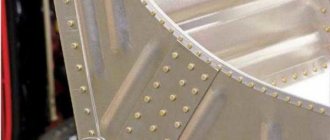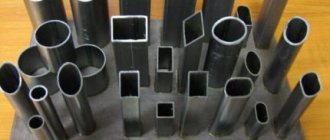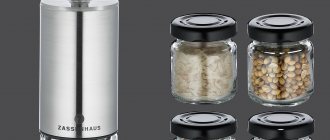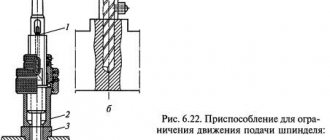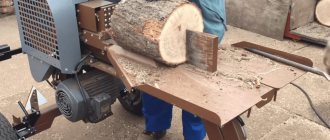A grain seeder for a walk-behind tractor belongs to the category of agricultural machines used to evenly plant seeds into the soil. Before the invention of the seeder, crop seeds were scattered manually, as a result of which the required seeding density was not achieved.
In addition, planting seeds by hand requires a lot of physical effort. Economically, manual sowing is not justified: scattered seeds fall unevenly onto the soil, and much more is wasted than when using a seeder. Also, manual planting leads to uneven distribution of seeds, as a result of which the soil is quickly depleted.
Do-it-yourself seeding unit - Metals, equipment, instructions
A handmade seeder made by yourself will help make it easier and faster to plant seeds in your garden or summer cottage.
This does not require any special materials or special skills, since a do-it-yourself sowing unit, in most cases, is a simple device.
Benefits of using a manual seeder
Manual labor on the land is always hard work. But, using simple devices, such as homemade seeders, you can turn it into pleasure.
Using a hand-made precision seeding seeder created by yourself, you can achieve the following:
- the seeds will be evenly distributed on the beds, forming even rows;
- the depth of placement in the soil will be the same for all seeds, which will allow seedlings to appear at the same time;
- A homemade do-it-yourself precision seeder will allow you to create even row spacing and ensure an equal distance between future plants, and this will make caring for them easier in the future.
Options for homemade seeders
Everyone who is going to make a seeder with their own hands wants to reduce its cost as much as possible. Therefore, most often, craftsmen make those units that can be made from scrap materials.
For example, a do-it-yourself vacuum seeder is more of a myth than a reality, because its manufacture requires not only serious knowledge and skills, but also a large number of purchased spare parts.
General view of a homemade seeder
Therefore, we will not consider the process of manufacturing more complex seeders. We will talk about the simplest and most universal devices for sowing seeds.
The simplest manual seeder
Each craftsman decides for himself how to make a homemade seeder using available materials. But the principle of arranging working elements boils down to the following content:
- presence of a seed reservoir;
- use of a system for separating seeds from the total mass;
- installation of a device for covering seeds with soil after sowing.
An example of such a device would be a do-it-yourself carrot seeder, the manufacture of which will require the following materials:
- transparent plastic flat jar (diameter from 10 cm and wall height up to 5 cm);
- a bolt more than 7 cm long - it will serve as an axis;
- a piece of plastic pipe of arbitrary diameter and length equal to the depth of the can (this will be a sleeve);
- metal tube, slightly smaller than the inner diameter of the plastic pipe (for free rotation);
- washers (2 pieces) for fixing the can on the axis through the bushing;
- a long wooden handle (a shovel handle will do);
- a small sheet of thin metal in the form of a hoe (for raking the earth after sowing).
After all materials and tools are prepared, you can proceed to assembly:
Drawing of a manual seeder
- We measure the center of the plastic jar and drill a hole through. It is necessary to perform this operation with maximum accuracy, since rotation will occur thanks to this hole.
- We make another hole in the lid (can be triangular) to pour the seeds inside the jar.
- We close the triangular hole with a valve made of tin (tin can), which is secured with one screw and nut in one of the corners to allow movement.
- Insert a pre-prepared piece of plastic tube into the hole in the center of the jar. This bushing will prevent the seeds from spilling out and will add rigidity when attached to the handle.
- We insert a metal tube into the plastic sleeve through which a long fastening bolt passes.
- We fix the entire structure through the hole at the end of the wooden handle, having previously laid the washers, using a long screw and nut.
- We put a control mark on the can and, as it rolls, determine the distance that is obtained with one revolution while moving along the ground.
- Depending on the required distance between the sown seeds, we calculate the number of holes for the seeds to fall out when rolling along the bed. This can be from 3 to 5 cm along the side plane of the can.
- Having marked the required number of holes, we use a hot nail to make holes through which the seeds will fall out.
- We select the diameter of the holes for planting seeds according to their size. Holes that are too small will prevent the seed from falling out, while holes that are too large will cause more than the required amount to fall out.
If desired, you can attach a flat metal plate to the cutting, with which the sown seeds will be covered with soil immediately after sowing.
Usage
For example, such a device can be used as a garlic seeder.
In the area allocated for this crop, furrows are made using a hoe (as with conventional sowing). Then, a hand seeder is placed in the furrow and as it moves, the seeds are evenly distributed along the entire length of the future bed. While moving, the presence of a metal plate that covers the sown grains with soil will make it possible not to go through this area again.
What does a universal hand seeder consist of?
The disadvantages of such a device include the limited possibility of sowing (only one row) and sowing only one specific crop, since the seeds are not the same in size for different plants. To eliminate this problem, several replacement jars should be used, with different opening sizes for each crop.
In the same way, you can make a lawn seeder with your own hands. The only difference is that not one, but several (4 or 6) plastic cans are attached to the wooden handle in equal quantities on both sides. In this case, special sowing accuracy is not needed, but uniform distribution of lawn grass seeds will be ensured, covering a larger area.
Universal hand seeder and its creation
A more complex option for self-manufacturing a device for sowing seeds, which allows you to work with any seed crops.
The main working mechanism is the sowing shaft, which is an aluminum tube with a diameter of 30 mm (plus/minus 2 mm). Holes of different diameters should be drilled in it (according to the size of seeds of different crops) in three rows (each row for one crop).
The first row of 8 holes with a diameter of 4.5 mm is reserved for sowing such garden plants as parsley, carrots, sorrel, lettuce and others like them.
The second row with 16 holes with a diameter of 5.5 mm allows you to sow onions.
The third row, which consists of 5 holes with a diameter of 8.2 mm, is intended for sowing large seed crops (peas, beets, etc.).
In order to use one of the three rows during operation, the seeding shaft can be moved horizontally in relation to the loading hopper.
The seed hopper is made of sheet (preferably galvanized steel) 0.3-0.5 mm thick, in the form of a truncated inverted pyramid, the upper base of which is 80x70 mm and the height is 40 mm.
The lower part of the hopper has an opening for passing seed material to the sowing shaft.
There is also a brush located there that regulates the sowing density when moving it vertically relative to the sowing shaft.
Sowing with a manual seeder
To control the filling of the hopper, it is closed with a transparent lid made of plastic or plexiglass. The lid is also necessary to ensure that the seeds do not spill out when moving when the hopper is completely filled or are not blown away by the wind.
The frame of the universal seeder, on which the bunker is attached, is made of 2.5 mm sheet steel with dimensions of 78x85 mm. The sides of the frame should be 90 mm, and the front and back 40 mm (seed hopper length). At the bottom of the frame, on the sides, holes are prepared for the bearings on which the sowing shaft will be supported, with a diameter of 28.05 mm.
A 0.8 m thick stainless steel coulter, which has a length of 90 mm, is attached to the frame. It must be bent in the center so that the seeds slide down freely along the resulting trench, occupying a precisely defined place in the bed.
Wheels are attached to the seeding shaft, on the outer sides of the frame, which will transmit rotational motion to it. It is better to use ready-made wheels (made of nylon).
Application of a universal seeder
In the selected area, furrows are made in the soil along its entire length. Having set up the seeder, moving the brush to the position for one of the three rows, the hopper is filled with seed material.
How to choose a planter for your site
There is a large assortment of planters in stores. In order not to make a mistake in choosing a model, pay attention to the following:
- area of the site;
- soil condition;
- quality of seed material;
- compatibility of the garlic planter with the brand and model of the existing walk-behind tractor or mini tractor;
- dimensions and weight of the tool.
Important! The seeder is purchased in specialized stores, carefully checking quality certificates, warranty periods and the reputation of the store.
If the area is small, then planting is carried out using hand planters. Four-row planters are considered optimal. They work well on uneven ground and are able to adjust planting spacing and depth. The table shows the advantages and disadvantages of different types of garlic planters.
| Device type | Advantages | Flaws |
| On a walk-behind tractor |
|
|
| To the tractor |
|
|
| Manual |
|
|
DIY manual seeder
Every summer resident and gardener knows how important it is to plant vegetables correctly. This process is labor-intensive, quite expensive in both time and money.
After all, it is necessary not only to evenly distribute the planting seeds in the furrows, but also to further thin out the seedlings manually, forming crops. A special seeder will help to significantly simplify the work, which, even in manual mode, will be a real help in planting.
The article will discuss the nuances of the operation of planting structures, the principle of manual assembly of the simplest mechanisms, the features of operation and the creation of manual machines for more accurate seeding.
Tool requirements
A completely working structure is made from available materials: various recyclable materials, tin cans, plastic bottles. It is advisable to use more complex structures made of metal sheets only for industrial-scale cultivation of vegetable crops.
A good example of the simplest design for planting is a carrot seeder.
Certain aspects apply to self-made mechanisms for planting vegetables.:
- The placement of seed into the soil must be in a certain quantity (per 1 linear meter) and to the required depth.
- Seeds should be distributed evenly, without gaps and without damage.
- The mechanism ensures straightness of planting rows and row spacing.
- After each laying, the grooves should be filled with loose soil.
Sowing small seeds is best done using mini-seeders. Such devices are suitable for growing carrots, onion sets, salad greens, that is, those crops that have rather small planting material.
Range of modern seeders
If making a planting unit yourself causes difficulties, it is recommended to immediately purchase ready-made structures. The assortment on the market is quite large. The American model of precision seeding “1001 - B” is equipped with 6 replaceable discs. With such a seeder you can plant 28 types of vegetable crops. Using the adjusting screw, you can change the planting depth.
Newtechagro seeders are single-row types. Designed for sowing beets, carrots, onions, and cabbage . But such designs are expensive.
But there are also cheaper analogues - precision seeders "SOR - 1/1". They are also single-row, can be equipped with a bush or brush sowing unit, the row marker is 0.5 m. This is quite enough for an average garden.
Using a manual seeder can significantly reduce labor costs, increases the speed of the planting process, simplifies the technology, significantly improves the quality of crops, and hence excellent harvests in the future.
Design features and general operation scheme of seeders for mini tractors
The seeders consist of:
- a frame that carries fasteners for coupling the seeder with a mini tractor;
- containers with planting material;
- a device for feeding seeds or root crops – evenly selects them from the containers and feeds them into the seed tube;
- coulters (most often of the disk type), which cut layers of soil to plant a particular crop to the optimal depth;
- implements that bury planted elements with soil and level the soil.
The standard operating principle of any seeder on a mini tractor looks like this:
- coulters or support wheels cut future beds, the furrow depth of which can be set by the user;
- seeds fall into the furrow, and in combined models also fertilizers;
- The bed is covered with soil using one of the coulters or the rear drum. If the seeder contains a special bar, the soil is leveled and returns to its original shape.
This is interesting: Description and principle of operation of the Tornado manual cultivator
SVTV 4-8
The SVTV 4-8 vacuum walk-behind seeder is designed for precision sowing of vegetable crops, garlic, and grains. The basic configuration has 4 rows, but if necessary, it can be expanded to 8 rows. This equipment allows you to achieve more accurate seeding compared to pneumatic units. The seeder can be used with both heavy walk-behind tractors and mini-tractors.
Specifications
Popular models on the market
Domestic manufacturers have developed a number of seeders that meet the needs of any farmer. It’s convenient that there are no problems finding and purchasing the necessary spare parts at an affordable price. Let's look at the most popular models:
- SMK-3 VPS27/1-10/4 is a manual three-row seeder. This model has the following parameters: distance between rows - 12 cm, the ability to install attachments for other crops, furrow depth - from 1 to 3 cm, weight - 3 kg.
- The ChS-1 single-row seeder is designed for installation on a 6-hp walk-behind tractor. pp., it is possible to calibrate seeds (15-25 mm) with planting increments of 11, 12.5, 14 cm, container capacity - 10 l, furrow depth - 6-8 cm, weight - 20 kg.
- The two-row model ChS-2 is manufactured as an attachment for any 6-hp walk-behind tractor. With. The width between the rows is adjusted within 20-40 cm, the sowing depth is 6-8 cm. There is a calibration device and large containers for seeds. The weight of the entire structure is 44 kg.
- The four-row ChS-4 is equipped with a capacity of 10 liters, the planting depth is 8-10 cm with a seed ejection distance of 11, 12.5, 14 cm. The row spacing is selected within the range of 20-53 cm. The weight of the entire structure is 73 kg.
- The attachment for the walk-behind tractor is a collapsible model, so the number of simultaneously planted rows can be changed. Seed calibration is carried out within the range of 2-16 mm. The container volume is 5 liters. Loosening depth is 1-10 cm. You can change the frequency of opening the gutter. Product weight - 60 kg.
How to properly dry garlic at home after digging?
SM-6
The seeder for the SM-6 walk-behind tractor is designed specifically for the seed application of small-seeded vegetable and grain crops in greenhouses, small farms and personal plots. This equipment can perform uniform six-row sowing of vegetable, grain and herb seeds.
Using the CM-6 seeder, it is possible to sow crops such as peppers, garlic and peas, radishes and beets, parsley and dill, carrots and tomatoes, sweet clover and spinach, and many others.
Uniformity and precision of seed application into the soil is achieved thanks to the ability to adjust the depth and sowing rate. When sowing fine seeds, they should be mixed with a filler, which can be bran, cereals or roasted seeds of various plants, but the use of river sand is strictly not recommended.
The CM-6 seeder can be aggregated with medium and heavy walk-behind tractors, and can also be used in one of three ways:
- using a PNO adapter (recommended for unfenced land plots with an area of over 10 acres);
- using one walk-behind tractor (recommended for use in fenced areas of up to 10 acres);
- using manual traction (when processing fenced areas of up to 5 acres, as well as in greenhouses).
Specifications
